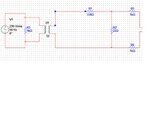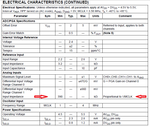power--man
Junior Member level 1
hi there guys
will the circuit below work?

A 1k ohm load is connected to mains and a step down transformer( 230V to 12V) connected across the load. i want to sense the voltage of the load. The voltage at the secondary side is then brought down further with the use of resistors to a appropriate value of 660mv to be fed into the mcp3909. I require a plus and minus AC voltage at the output to be fed into the mcp3909
will the circuit below work?

A 1k ohm load is connected to mains and a step down transformer( 230V to 12V) connected across the load. i want to sense the voltage of the load. The voltage at the secondary side is then brought down further with the use of resistors to a appropriate value of 660mv to be fed into the mcp3909. I require a plus and minus AC voltage at the output to be fed into the mcp3909

